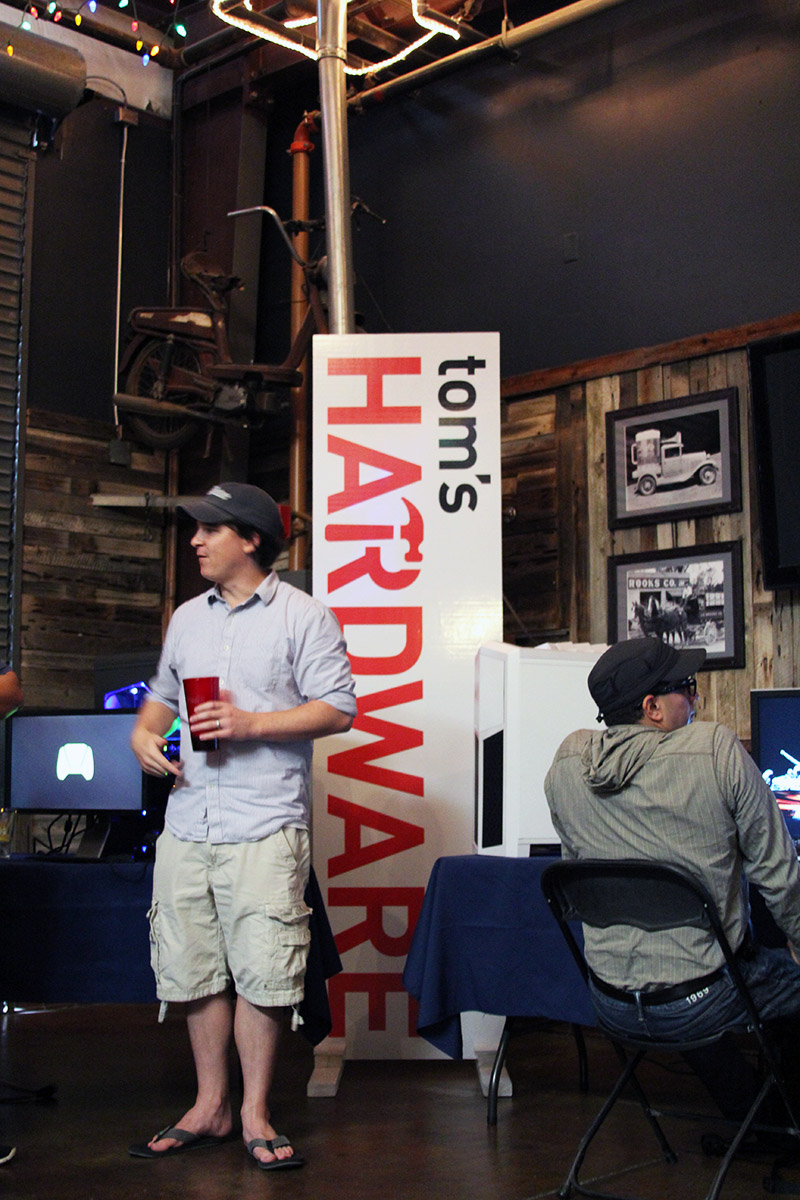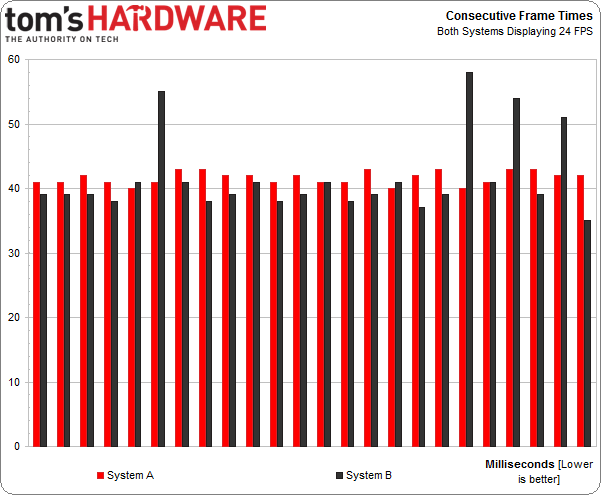Radeon HD 7990 Vs. GeForce GTX 690: The Crowd Picks A Winner
Tom's Hardware enlists the help of /r/Bakersfield, plus some of its Facebook community, to test AMD's Radeon HD 7990 with the latest Catalyst 13.8 beta driver against GeForce GTX 690. The all-day event turned up some interesting observations.
Tom's Hardware Readers Rate Two Of The Most Expensive Graphics Cards
Let’s say that you’re buying a new car tomorrow. It’s your first car, and you don’t know what to get. You have one friend who swears by Fords, but only because the company didn’t take any bailout money, you suspect. That sort of fanaticism doesn’t help you—you’re going to actually be driving this thing. You want a recommendation based on performance, mileage, reliability, and not some random factoid that ignites misplaced loyalty.
What’s better, then: one recommendation or several corroborating opinions from folks with no skin in the game?
Yeah, that’s an easy one. But when you hop on a forum and ask, “Which graphics card should I buy, AMD’s Radeon HD 7970 or Nvidia’s GeForce GTX 770?” get ready for an epic war of words, often waged by folks who don’t own either one.
This is why sites like Tom’s Hardware exist. We’re the guys who put in the hours to figure out whether A is faster than B. Almost exclusively, the recommendations we make are based on data generated in the lab. That information is conveyed to you in the form of benchmark results. But when it comes to multi-GPU graphics card configurations…well, we all know how complicated the story can get.
Does Radeon HD 7990 Redeem Itself?
Yesterday, Don Woligroski published his look at AMD’s Catalyst 13.8 beta driver, which adds frame pacing support. The purpose of frame pacing, as many of you already know, is to measure the rate at which frames are being rendered and deliver them in a more consistent cadence, rather than allowing each of the card’s two GPUs to simply output them as quickly as possible.
Don’s piece took our conventional data-driven approach. He used video capture and the FCAT tool set to analyze the output of AMD’s Radeon HD 7990 before and after Catalyst 13.8, compared to Nvidia’s GeForce GTX 690. He measured average frame rate, charted frame rate over time, and frame time latency.
What we hoped to see from AMD’s work was fewer dropped and runt frames. In fact, we were looking for frames to show up on-screen for about as long as the ones before and after them. Using the image below as an example, the red bars are more desirable than the black, despite the fact that both average 24 FPS. For more on this concept of consistent frame delivery, check out this page.
Get Tom's Hardware's best news and in-depth reviews, straight to your inbox.
According to the numbers Don generated, Catalyst 13.8 beta does notably reduce the variance between individual frames, indicating that the Radeon HD 7990 performs more consistently with frame pacing enabled. However, Don’s videos also sometimes contradicted the outcome of FCAT, appearing choppy when the analysis tool suggested otherwise.
You'll have to excuse the video and audio quality; it's both loud and dark inside the brewery, and I didn't take my wireless mics with me.
Crowdsourcing Benchmark Data
Rather than drawing a definitive conclusion from the FCAT data or videos, we planned an event that’d run concurrent with Don’s testing. This event would bring in volunteers who’d play on two identically-configured platforms for a few minutes per game in popular titles. After switching from A to B, they’d jot down their preference and explain why the system they picked was the favorite. We’d collate the data and look for patterns in the subjective testing compared to Don’s benchmark numbers.
After such an inconclusive report yesterday, could we even hope to definitively answer whether AMD’s Catalyst 13.8 beta driver improves gaming on the Radeon HD 7990? Does it fare any differently against Nvidia’s GeForce GTX 690? That’s exactly what we hoped to figure out.
Current page: Tom's Hardware Readers Rate Two Of The Most Expensive Graphics Cards
Next Page Getting Enthusiasts Together For A Day Of Benchmarking-
iam2thecrowe can you please show cpu useage before and after the driver update, and also show results on a lower end system, like an fx6300 with dual 7850's? That would be interesting.Reply -
bin1127 A great article with some very interesting results.Reply
Chris really knows use funny and imaginative metaphors to start of his articles. Keep up the good work! -
iam2thecrowe can you please show cpu useage before and after the driver update, and also show results on a lower end system, like an fx6300 with dual 7850's? That would be interesting.Reply -
merikafyeah If I had $700 to spend on graphics, I'd buy the fastest single-gpu card there is:Reply
The Galaxy GeForce GTX 780 HOF Edition
http://www.hardocp.com/article/2013/08/14/galaxy_geforce_gtx_780_hof_edition_review/
http://www.amazon.com/dp/B00DZIFN4M/
Out of the box it beats the Titan in pretty much everything and when overclocked I'd bet performance would be indistinguishable from a GTX 690. And did I mention single GPU? Frame-pacing = non-issue. And those temps/noise ratios are in a league of their own. -
iam2thecrowe Reply11482712 said:If I had $700 to spend on graphics, I'd buy the fastest single-gpu card there is:
The Galaxy GeForce GTX 780 HOF Edition
http://www.hardocp.com/article/2013/08/14/galaxy_geforce_gtx_780_hof_edition_review/
http://www.amazon.com/dp/B00DZIFN4M/
Out of the box it beats the Titan in pretty much everything and when overclocked I'd bet performance would be indistinguishable from a GTX 690. And did I mention single GPU? Frame-pacing = non-issue. And those temps/noise ratios are in a league of their own.
you are pretty much right on there. people often overlook galaxy cards (i know i do), for obvious reasons (quality/after sales support) . but this card is insane, with extremely good OC capabilities. If i had a choice between this and a 690, i would certainly take this card. Althogh i would take 2 x of the cheapest 770's available before any of the mentioned cards. -
AndrewJacksonZA I think the most important part of this article is this little gem:Reply
"My wife is in the background with our then-two-week-old baby girl"
Congratulations Chris!!! :-) -
geok1ng With due respect for TH efforts on the subject, but keeping Metro LL results is a BIAS. How about some piecharts WITHOUT METRO LL?Reply -
Bill Reinhardt You know how wine is matched for optimal flavor compatability with certain foods?Reply
http://en.wikipedia.org/wiki/Wine_and_food_matching
You should have done that with beer and video games. -
Iron_Sean Why did you only test Triple monitors with no frame pacing versus single high res monitor with frame pacing?Reply
You're confounding variables and making your results hard to compare directly: Is the difference 6 MP vs 4 MP, frame pacing, or their crossfire/surround technology? This is an interesting idea, but I'd really like to see it narrowed to a single variable to better compare the technologies.


